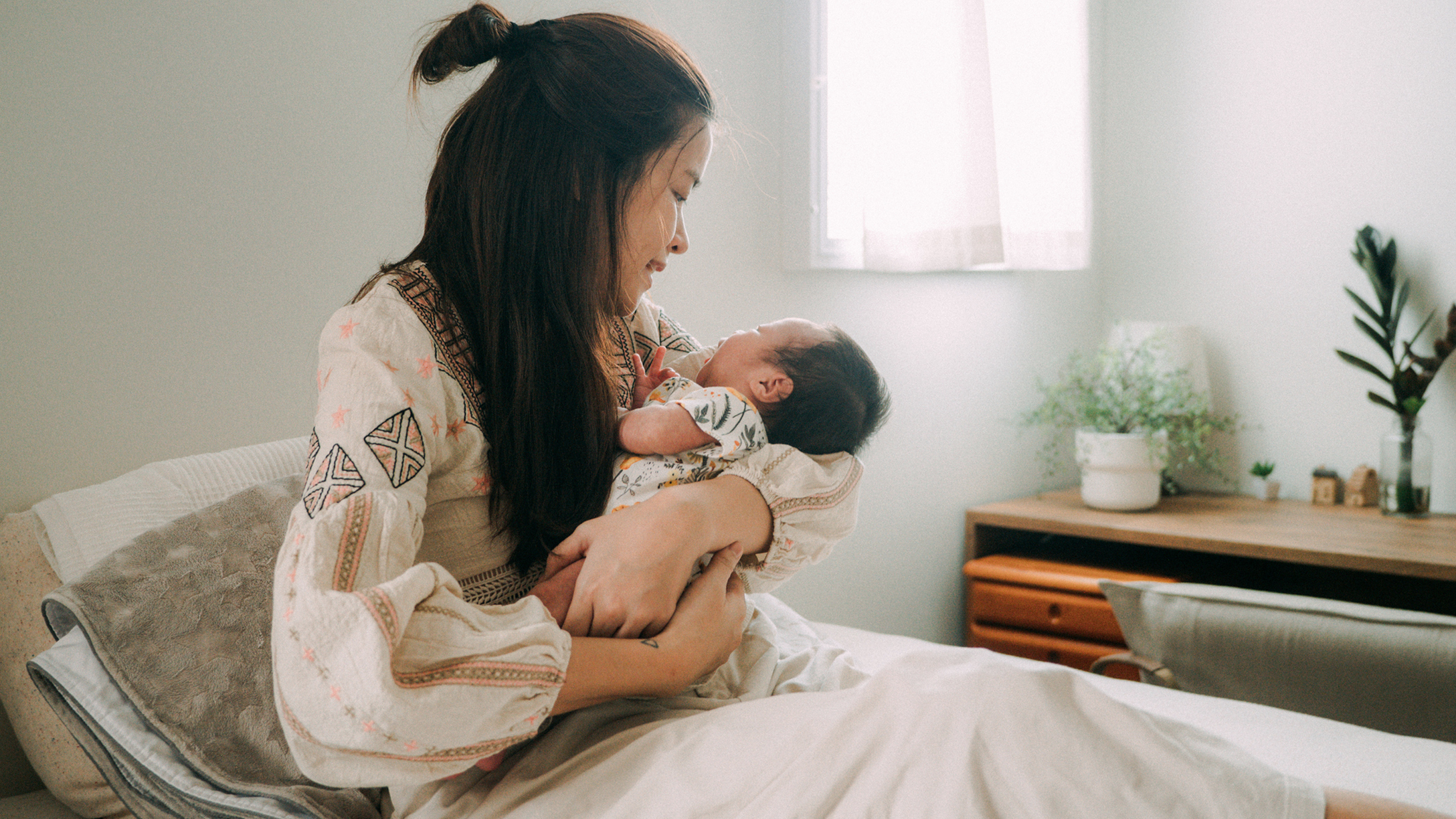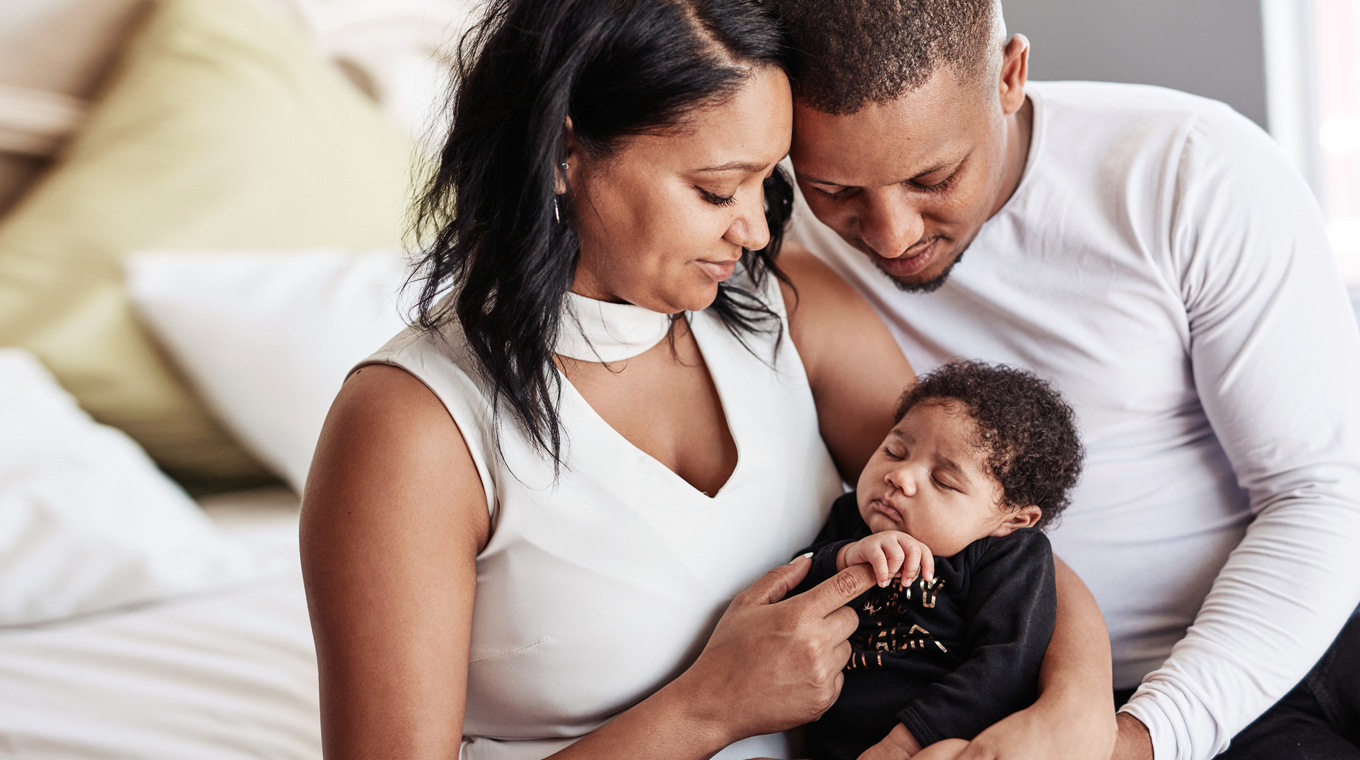
In this article
The thought of holding a baby can be scary, especially if you don't have any experience. But overall, babies are more sturdy than they look, so as long as you remember a few key points, you needn't worry. If you're getting ready to deliver or see your newborn baby for the first time and you've never held a baby before, read on to learn how to hold a newborn baby, so when the time comes, you'll be a complete pro!
Newborn baby basics

Because newborn babies have an immature immune system it's important to be vigilant about handwashing, and this is especially important when inevitably someone asks to hold your baby. Don't feel uncomfortable asking — your baby's health is a top priority. New mom Jessica Hover is always straightforward about it when people ask to hold her son.
"I ask people to wash their hands before they hold him," Hover explained in a YouTube video chronicling her first week with her newborn. "I also have hand sanitizer in my purse, so sometimes if somebody wants to hold him and I'm not sure of how clean we all are, I'll ask them to use sanitizer first."
Cleanliness aside, for those wanting to know how to hold a newborn baby, the most important thing is to always support the baby's head and neck until they're able to support it on their own; between one and three months old.
To do this, simply lean in, gently slide one hand under your baby's head and neck, and place the other hand under their bum. Scoop baby up and draw them close to your chest without removing your hands from their bottom or head.
Now that you've got the baby safely in your arms, it's a matter of finding the best position to hold the baby. This will vary depending on what you're doing, and temperament and preferences — both theirs and yours. The key thing to remember is to remain relaxed and confident — don't tense up or overthink it.
Best positions to hold baby

Cradle hold
In those first few weeks, the best position to hold your baby is going to be the cradle hold. As you lean in to pick up your baby and are supporting their head with your hand, scoop the baby toward you. You'll essentially be cradling them in your arms.
Gently with the hand that is supporting their bottom, bring that hand toward their head to support it, while simultaneously sliding the hand that was supporting baby's head down towards their bottom and inward toward your navel area. Baby's head will gently rest in the crook of your elbow while your hands cradle the length of their body.
Belly hold
From the cradle hold, in cases where baby needs to burp or you simply need to try a new position to console them, the belly hold is an easy transition. Lay your baby tummy down across your forearm; their head will be near the crook of your elbow and their legs on either side of your forearm.
If holding in this position after a feeding, keep a burp cloth close at hand and gently massage baby's back in circular motions to get them to burp.
Shoulder hold
At some point your baby is going to be interested in what's going on around them. This is where the shoulder hold comes into play. As you draw baby toward your chest when first picking them up, draw them in with their head toward your shoulder so they can see over it.
This is a great hold for consoling baby, encouraging a burp, or just when you're out and about. There's nothing like the feeling of a sleeping baby resting their cheek against your shoulder as you go about your day.
How to lay down newborn without waking them

Holding a baby can be calming and you may sometimes feel as though you want to hold them all day. At some point, however, you've got to tend to your own needs. Your baby's needs should not come at the detriment of your own. So, can you hold a newborn too much?
"Parents who are practicing the specific principles of attachment parenting should monitor their own well-being since there is such an emphasis on parents and babies being physically close," Dr. Emily Edlynn told Good Housekeeping.
"If sleeping closely and nursing are causing more sleep-deprivation and stress for a mother, there is a risk for depression and anxiety that can then interfere with the bonding process. Modify or moderate the attachment parenting practices if it helps you be an emotionally healthier parent," Edlynn continued.
When you're ready to lay your baby down comfortably or if they've fallen asleep and you don't want to wake them up, try the following method. (Make sure your baby is sound asleep.)
- Start off by gradually creating some distance between the two of you. If your baby has been resting against your warm and cozy body, move them away a little; if they stay asleep after a few seconds, your chances of transferring to the crib or bassinette, still sleeping, are good.
- Gently lower your baby to the sleeping area, hover a bit, and slowly lower them down. Rather than one quick fell swoop, laying baby down is a slow transition that should be done in small stages.
- Slowly and gently remove your hands and fingers from underneath baby, again probably best done in small steps. Slowly and quietly back away from the crib or bassinette.
The challenge now will be getting yourself out of the room without stepping on a squeaky toy, the cat's tail, or a creaking floorboard!




